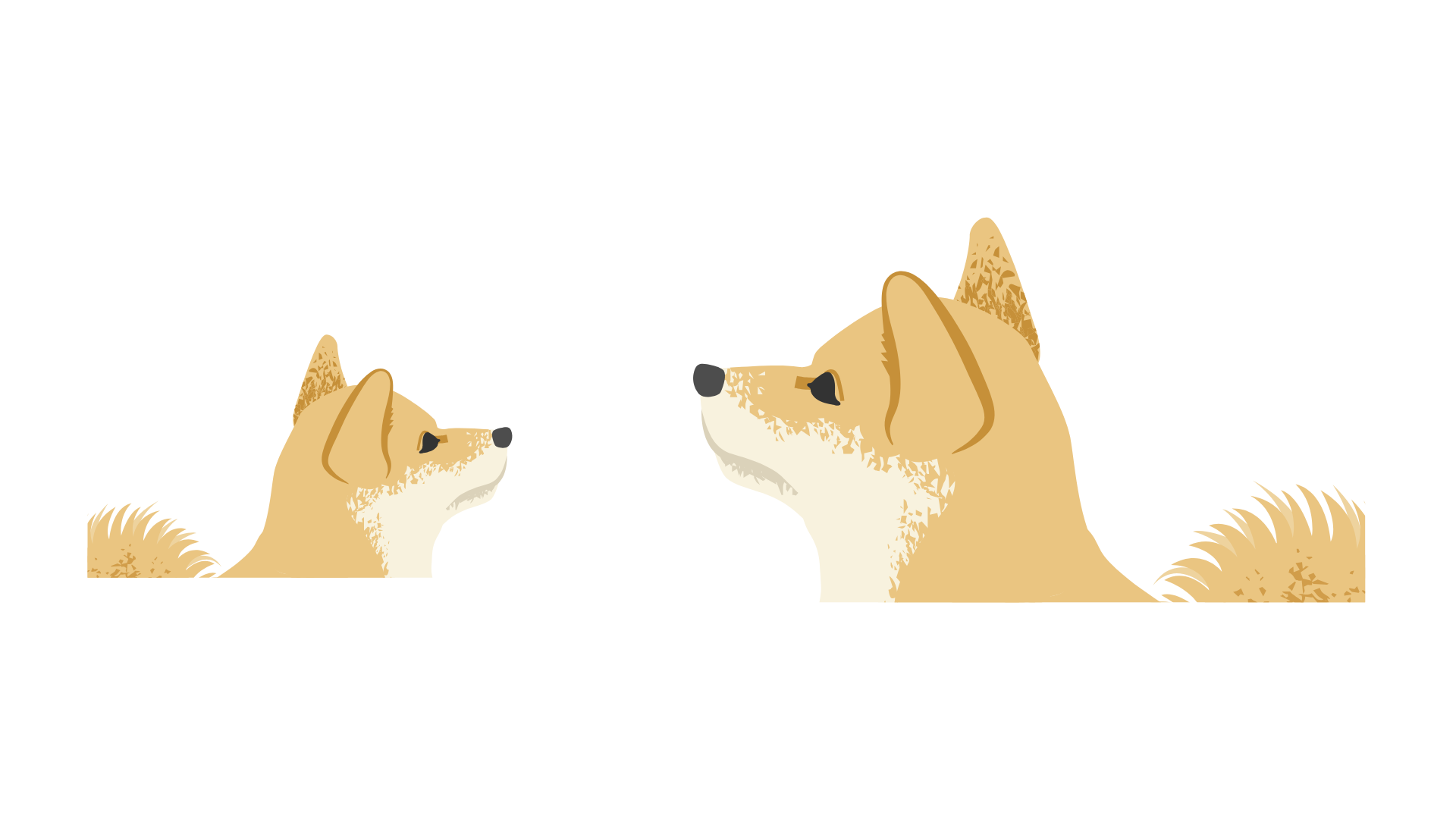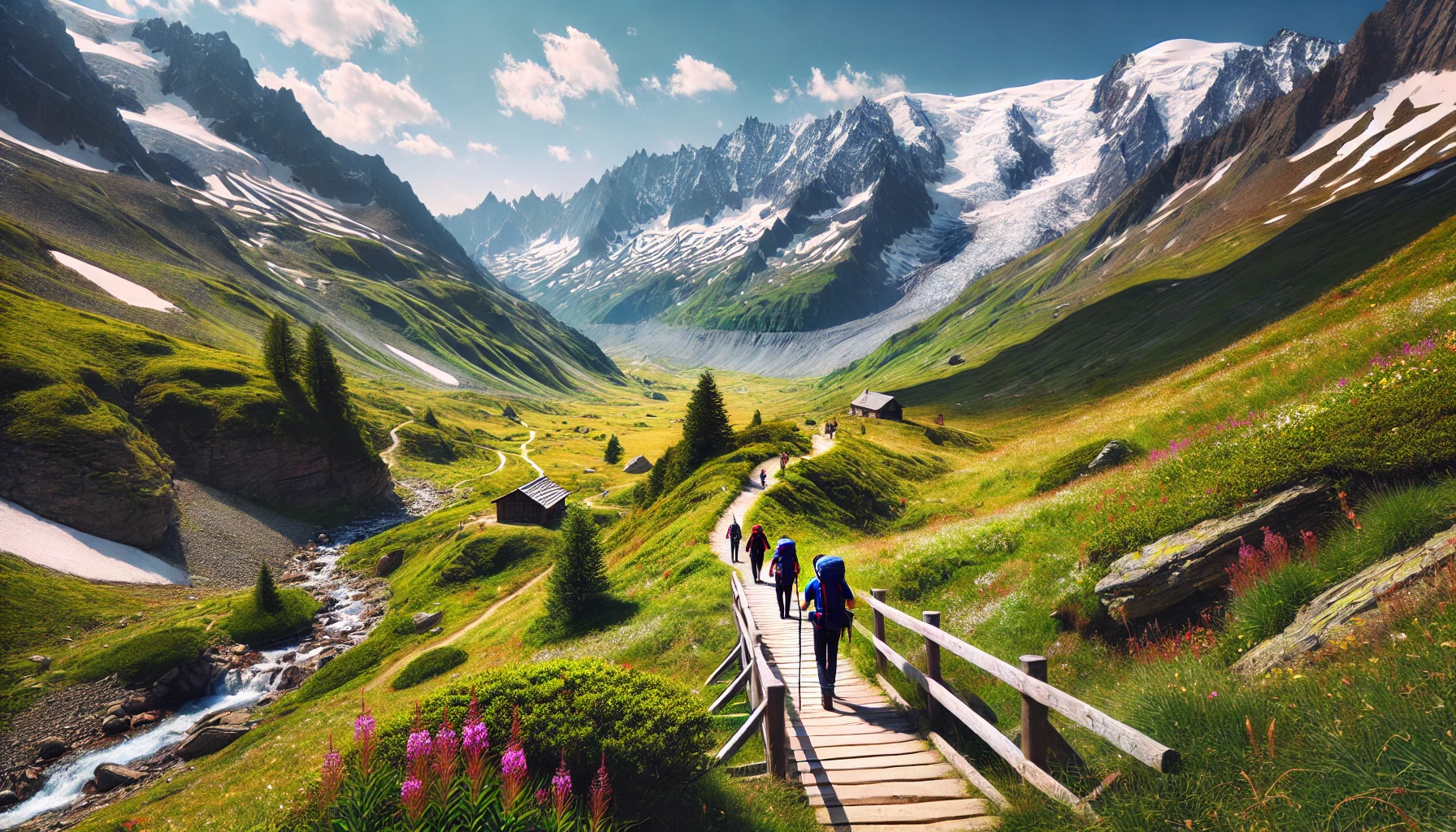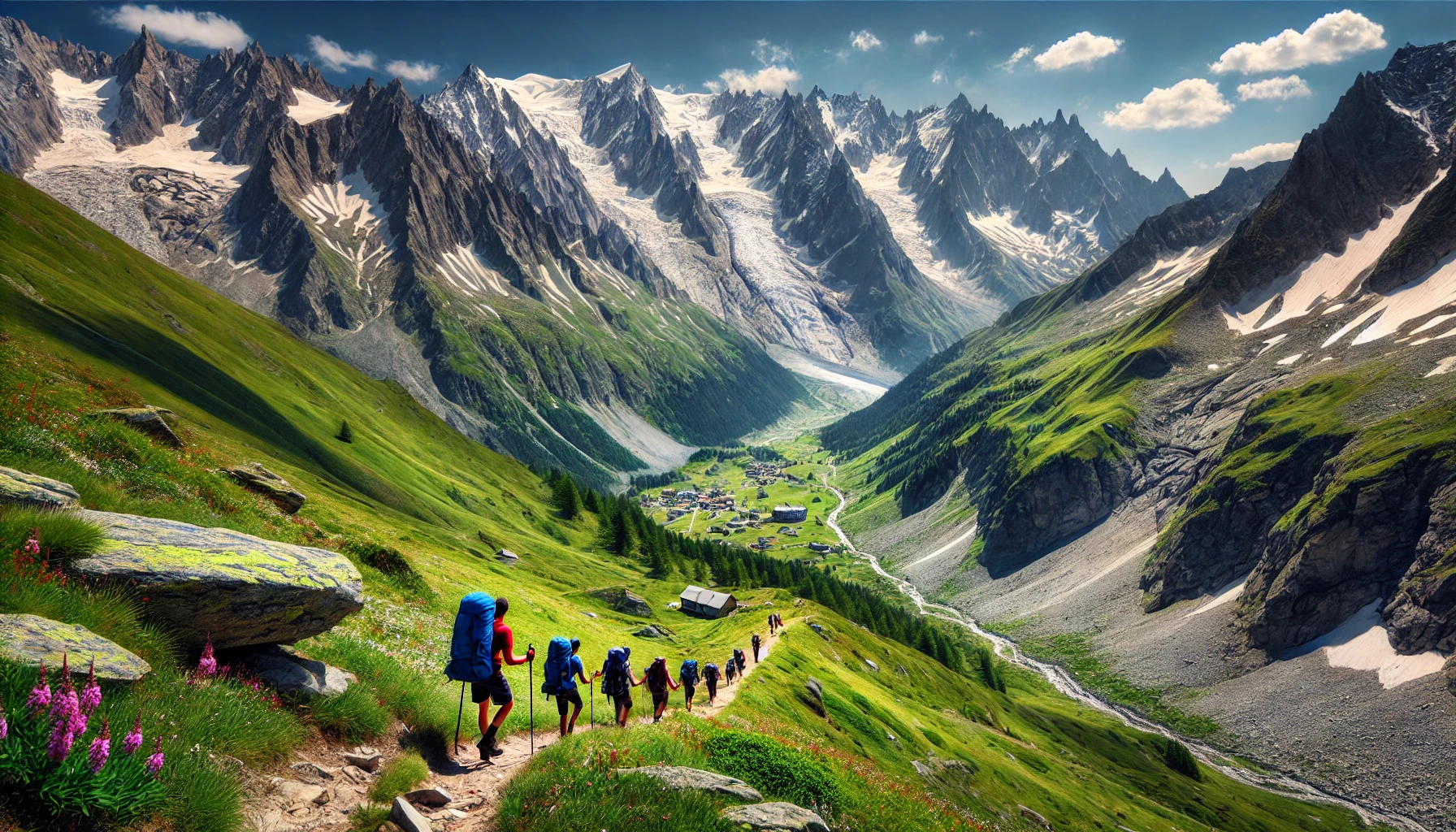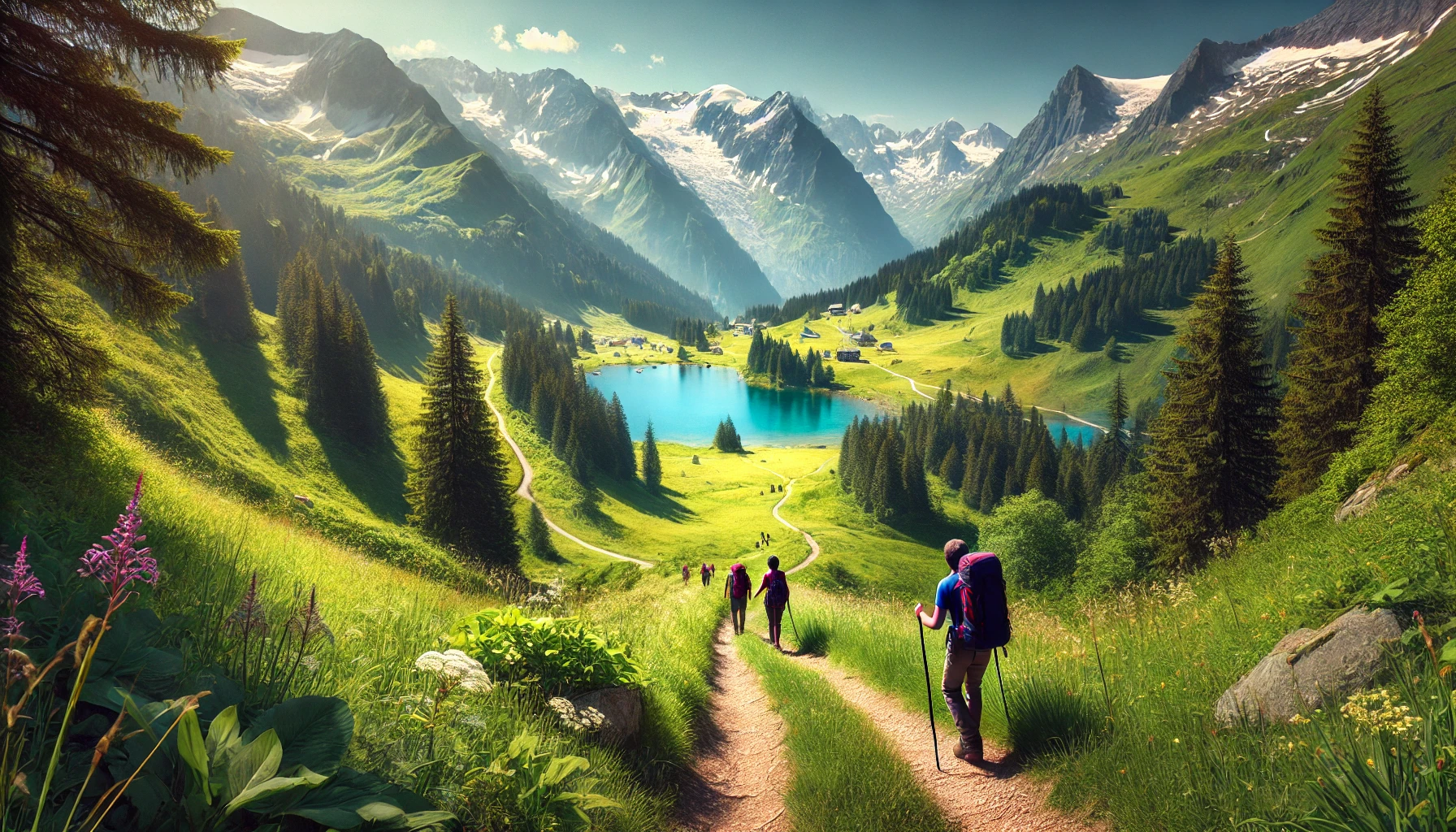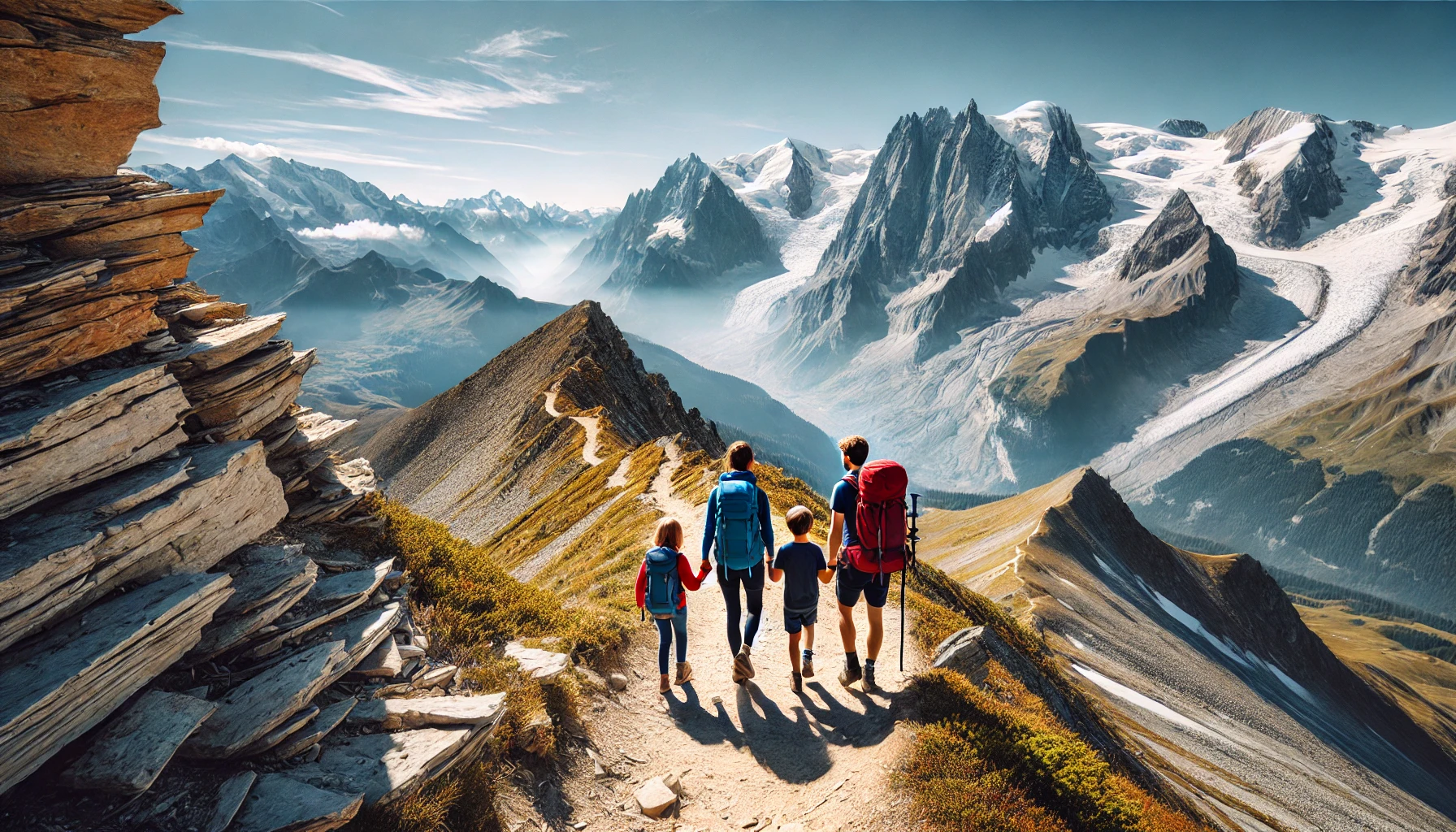
TOUR DU MONT-BLANC
HIKE, RUN OR BIKE
Let us guide you on an unforgettable excursion.
Embark on an unforgettable journey through the heart of the Alps with our personalized Tour du Mont Blanc itineraries, thoughtfully designed for every kind of adventurer. We understand that every group has unique priorities—some seek challenging routes that lead to hidden gems and off-the-beaten-path experiences, while others prefer to prioritize comfort above all else.
Whether you're a group of friends seeking new challenges, hiking enthusiasts eager to explore breathtaking landscapes, families looking to create lasting memories, or travelers with canine companions, we craft tailored experiences to suit your needs.
The Tour du Mont Blanc is a world-renowned trek that traverses the stunning alpine scenery of France, Italy, and Switzerland, offering a captivating blend of cultural charm, dramatic peaks, lush meadows, and welcoming refuges or hotels. Our seamless itineraries allow you to focus on what truly matters—enjoying every step of this extraordinary adventure.
IN NUMBERS
FIGURES
DISTANCE | ELEVATION
FULL — 170KM/105Miles | 9,500m/31,300ft
CURATED — 110KM/68Miles | 7,885m/25,869ft
MINI — 55KM/34Miles | 3,400m/2,900m (1-way)
DURATION
FASTPACK/HIKE
FULL — 8/10 DAYS | 7/10 NIGHTS
CURATED — 6/8 DAYS | 5/7 NIGHTS
MINI — 4/5 DAYS | 3/4 NIGHTS
CUSTOM — Please contact us.
RUN
FULL — 6 DAYS | 5 NIGHTS
CURATED — 4 DAYS | 3 NIGHTS
MINI — 3 DAYS | 2 NIGHTS
CUSTOM — Please contact us.
BIKE
FULL — 3/5 DAYS | 2/4 NIGHTS
CURATED — 2/4 DAYS | 3/5 NIGHTS
CUSTOM — Please contact us.
ITINERARY
The itinerary will be tailored to your group’s preferences, including duration, level of activity, and accommodation. Each stage of the Tour du Mont-Blanc offers a variety of options to suit different needs.
The excursion itineraries are planned to begin at the start of the activity, rather than upon airport arrival. However, we also offer concierge services to assist you from arrival to departure. The starting point for this itinerary is Chamonix, Mont Blanc.
A DAY ON THE TOUR DU MONT-BLANC
Experience the magic of the Tour du Mont Blanc with ALPS Concierge. Explore our social media channels for more incredible videos and stunning photos.
DAY TO DAY SAMPLE ITINERARY
ITINERARY COMPARISON
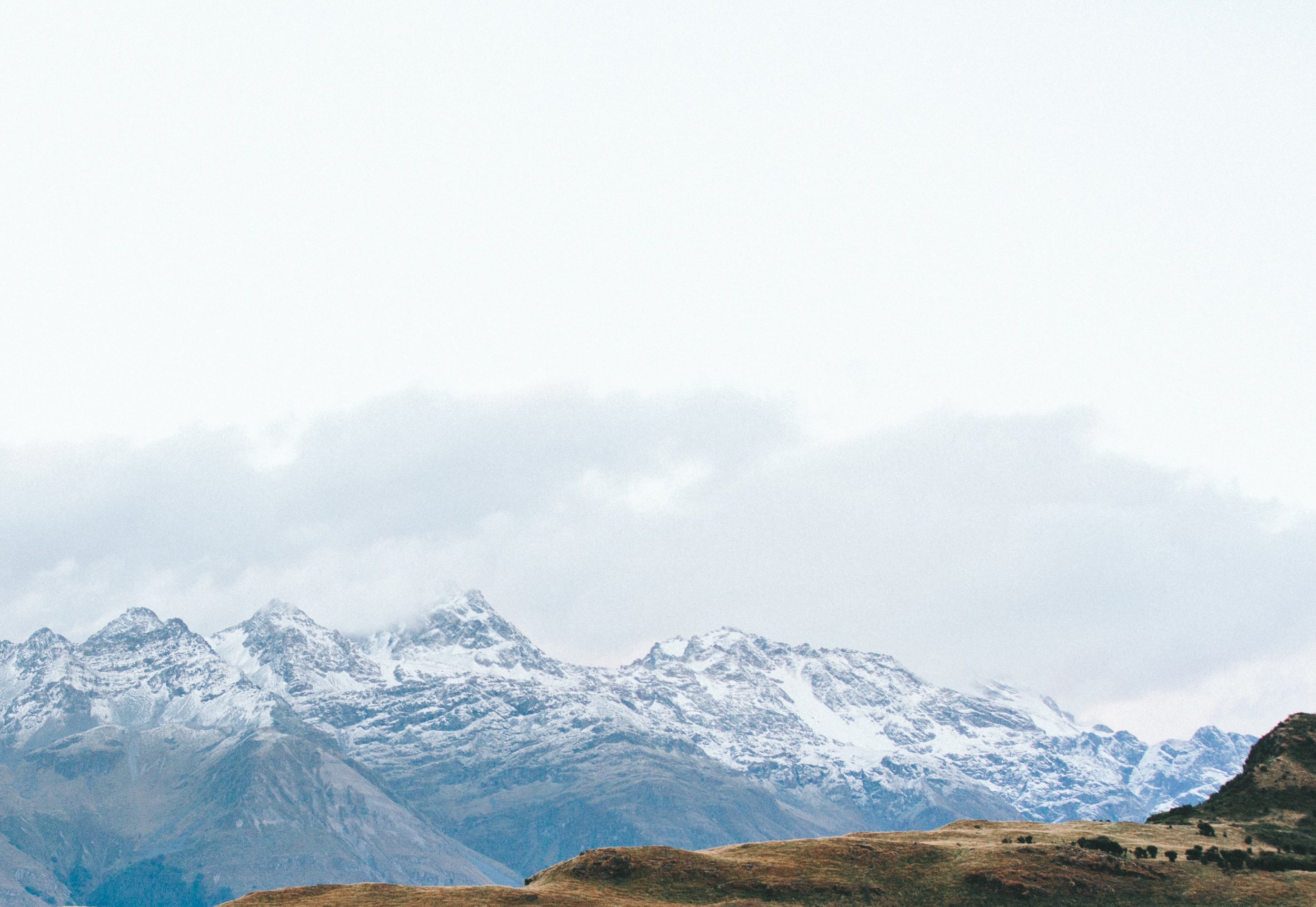
-
Essentials Packing List for the Tour du Mont Blanc
1. Clothing
The key to clothing on the TMB is layering to handle weather changes:
Base Layers (moisture-wicking):
2–3 short-sleeve or long-sleeve shirts (merino wool or synthetic)
1–2 pairs of hiking underwear (quick-drying, no cotton)
Mid-Layers (insulation):
1 fleece or lightweight down jacket (for cooler mornings/evenings)
1 pair of hiking trousers (convertible pants are useful)
1 pair of hiking shorts (optional for warmer days)
Outer Layers (weather protection):
Waterproof and windproof jacket (Gore-Tex or equivalent)
Waterproof over-pants or lightweight rain pants
Headwear and Gloves:
Wide-brim hat or cap (sun protection)
Beanie or wool hat (for cooler weather)
Lightweight gloves
Footwear:
Sturdy, waterproof hiking boots (broken-in with ankle support)
2–3 pairs of hiking socks (merino wool preferred)
1 pair of lightweight camp shoes (sandals or crocs for huts/refuges)
Nightwear:
Lightweight sleeping clothes (e.g., thermal base layers for cold huts)
Hiking Gear
Backpack (SELF GUIDED:
26–40L backpack for day hiking with a rain cover
luggage transfer service for main luggage
Trekking Poles:
Collapsible and lightweight poles to reduce strain on knees and aid stability
Hydration:
1.5–2L water reservoir or bottles (water sources are available along the route)
Water purification tablets or filter (for alpine streams)
Navigation:
Physical map of the TMB (e.g., IGN Topo Maps)
Compass and/or GPS device (optional)
Guidebook or app (e.g., Gaia GPS, AllTrails)
Headlamp/Flashlight:
With spare batteries (useful for early starts or huts with limited lighting)
Essentials and Safety
First Aid Kit:
Blister plasters (Compeed or Leukotape)
Painkillers (e.g., ibuprofen/paracetamol)
Antiseptic wipes, bandages, and tweezers
Any personal medications
Emergency Items:
Emergency blanket (space blanket)
Small whistle
Multi-tool or Swiss Army knife
Toiletries:
Travel-size toothbrush, toothpaste, and biodegradable soap
Quick-dry microfiber towel
Sunscreen (SPF 30+), lip balm (SPF)
Toilet paper and a small resealable bag for waste
Documents:
Passport, ID card (crossing France, Italy, and Switzerland)
Cash (some huts and small shops don’t accept cards)
Travel insurance details (ensure it covers mountain rescue)
Hut/Refuge Overnight Essentials
Sleeping Bag Liner:
Required in most refuges (silk or cotton liners work well)
Earplugs:
Dormitory-style rooms can be noisy.
Comfort Items:
Lightweight book, playing cards, or journal
Optional (but Useful) Items
Lightweight gaiters (for snow or muddy trails)
Portable power bank (charging options can be limited in huts)
Lightweight camera or GoPro for capturing memories
Notebook and pen
Small sit pad for breaks on the trail
Packing Tips:
Pack Light: Aim for a total backpack weight of 7–9 kg (15–20 lbs), excluding water.
Test Your Gear: Wear your boots and backpack during training hikes to ensure everything fits well.
Organize Gear: Use packing cubes or dry bags to keep gear organized and dry.
Weather-Ready: Mountain weather can change quickly, so always have your waterproof gear accessible.
-
Moderate to High Fitness:
The TMB involves daily hikes of 6–8 hours, covering distances of 10–20 km per day with significant elevation gain and loss.
Some days include ascents and descents of over 1,000 meters (e.g., crossing mountain passes like Col du Bonhomme or Col de la Seigne).
You should be comfortable walking for long hours with a backpack on uneven, rocky, and occasionally steep trails.
Experience with Multi-Day Hiking:
You don’t need to be an expert mountaineer, but previous experience with long hikes or multi-day treks will help.
Familiarity with carrying a daypack or backpack (weighing 6–12 kg) is important.
Adaptability to Altitude:
The highest points of the TMB are over 2,500 meters. While this isn’t extreme altitude, some people may feel short of breath or fatigued.
Regular cardiovascular and endurance training will prepare you for sustained efforts.
-
Training Plan (Start 2–3 months before):
Cardio Training: Activities like hiking, running, cycling, or stair climbing to build endurance. Aim for at least 3–4 sessions per week.
Strength Training: Focus on legs, core, and back with squats, lunges, and planks to prepare for carrying a backpack.
Long Hikes: Include weekend hikes of 15–20 km with elevation gain to simulate the TMB terrain.
Hill Training: Practice uphill and downhill hiking, as descents can be tough on the knees.
Gear Preparation:
Invest in broken-in hiking boots with ankle support.
Train with a loaded backpack to get used to the weight.
Use trekking poles to reduce stress on your knees, especially on steep descents.
Hydration and Nutrition:
Stay hydrated and carry a water bladder or bottles (refill at huts or water sources). Use a filtration system if needed.
Pack high-energy snacks like nuts, dried fruits, energy bars, and electrolyte supplements.
-
Mountain lodges, called "refuges" (France), "rifugi" (Italy), or "hütten" (Switzerland), are common along the TMB. They are basic but functional accommodations for hikers, often located at high altitudes or along the trail between towns.
What to Expect in Refuges:
Sleeping:
Typically in dormitory-style rooms with bunk beds.
Some refuges offer private rooms for an additional cost, but these are limited.
Bring a sleeping bag liner for hygiene, as blankets and pillows are usually provided.
Meals:
Half-board (dinner and breakfast) is often included. Meals are hearty and filling, with local specialties like pasta, soup, and bread.
Packed lunches can usually be requested for the next day.
Facilities:
Basic bathrooms: Shared toilets and sinks; showers may have limited hot water.
Some refuges charge a small fee for hot showers (€2–5).
Electricity and Wi-Fi are limited, and charging devices may not always be possible.
Atmosphere:
Communal and social, often with other hikers sharing meals and stories.
-
Refuges (Mountain Huts)
Refuges offer hearty, simple meals to keep you fueled for long days of hiking. Since they are remote and supplies often need to be carried up, food options are basic but satisfying.
Breakfast:
Typically simple: bread, butter, jam, tea, coffee, and sometimes cereals or yogurt.
Don’t expect elaborate breakfast buffets
Dinner (usually included in half-board):
Fixed menu with 3 courses:
Soup or salad as a starter.
Main dish: Commonly pasta, rice, polenta, or potatoes, served with a protein (meat, sausage, or vegetarian alternative like cheese).
Dessert: Simple options like cake, pudding, fruit, or yogurt.
Many refuges offer local specialties (e.g., tartiflette in France, polenta dishes in Italy, or rösti in Switzerland).
-
In villages and towns, you can find more comfortable accommodations, including hotels, inns, B&Bs, and even luxury options in places like Chamonix and Courmayeur.
What to Expect in Hotels and Guesthouses:
Rooms:
Private rooms with en-suite bathrooms and comfortable beds.
Options for single, double, or family rooms.
Facilities:
Hot showers, Wi-Fi, and electricity are standard.
Many hotels offer laundry services.
Meals:
Hotels often serve breakfast, and many have restaurants with local dishes.
Evening meals may be included in a half-board option.
-
Hotels and guesthouses offer a higher standard of food with more variety, fresher ingredients, and the opportunity to choose from menus.
Breakfast:
More generous compared to refuges: expect bread, pastries, yogurt, cereals, fruit, cheese, ham, and eggs.
Coffee, tea, and juice are standard.
Dinner:
Multi-course meals with local cuisine and more options.
Examples:
France: Tartiflette (potato gratin with cheese and bacon), fondue, or raclette.
Italy: Pasta, risotto, polenta, and meat dishes with rich sauces.
Switzerland: Rösti (potato fritters), sausages, and cheese-based dishes.
Higher-end hotels offer à la carte menus and wine lists.
-
Yes, there are cafés, mountain restaurants, and small eateries along the TMB, particularly near villages and popular trail sections. These are perfect for lunch stops:
France:
Cafés and small restaurants in Les Houches, Les Contamines, and Chamonix.
Mountain cafés like Refuge de Miage and those near ski lifts often serve drinks, sandwiches, and local dishes.
Italy:
Cafés and restaurants in Courmayeur and along sections of the trail offer fantastic Italian meals, sandwiches, pizza slices, and coffee.
Example: Stop at Rifugio Bonatti for lunch or homemade cakes.
Switzerland:
In Champex-Lac and Trient, you’ll find small restaurants or cafés.
Swiss chalets offer classics like rösti, soups, and sandwiches.
When a Box Lunch is Necessary
Some parts of the TMB are remote, with no access to cafés or restaurants during the day. These are sections where you’ll need to carry a packed lunch:
Col du Bonhomme (France): Between Les Contamines and Refuge de la Croix du Bonhomme.
Col de la Seigne to Rifugio Elisabetta (Italy): A long stretch with no food stops.
Fenêtre d’Arpette (Switzerland): Between Champex-Lac and Trient; strenuous and remote.
Shops for Snacks and Supplies
There are shops and supermarkets in larger villages and towns where you can buy snacks, power bars, and hiking essentials:
Chamonix and Les Houches (France): Supermarkets, bakeries, and outdoor shops.
Les Contamines (France): Small supermarkets and boulangeries for snacks and packed lunch items.
Courmayeur (Italy): Larger grocery stores, bakeries, and delis for fresh bread, cheese, and local treats.
Champex-Lac (Switzerland): Small grocery shops for basic supplies.
-
Vegetarians: Most refuges and hotels can accommodate vegetarians with pasta, rice, or vegetable dishes, but options may be repetitive.
Vegans: Options can be very limited, so pack vegan snacks and supplements.
Gluten-Free: Inform refuges or hotels in advance; carrying gluten-free snacks is advised.
Allergies: Clearly communicate any food allergies when booking accommodations.
-
The Tour du Mont Blanc can be kid-friendly with proper planning and adjustments. Instead of attempting the full loop, focus on shorter, scenic sections and prioritize rest and comfort. This way, kids can enjoy the adventure, stunning scenery, and alpine culture without being overwhelmed.
Tips for Making the TMB Kid-Friendly
Choose Easier Sections: Consider hiking the valleys and gentler passes, such as:
Les Contamines to Courmayeur – a mix of beauty and easier trails.
Champex-Lac (Switzerland) – a scenic and peaceful area.
Day Hikes Only: Base yourself in places like Chamonix, Courmayeur, or Les Houches, and do day hikes.
Take Breaks: Plan shorter hiking days (3–5 hours max) and include breaks for snacks and exploration.
Use Transportation: Use lifts, buses, or taxis to skip tough sections.
Be Flexible: Watch how the kids feel each day and adjust as needed
-
The Tour du Mont Blanc can be pet-friendly with proper preparation. Be ready for restrictions in nature reserves, plan alternative routes for tough sections, and confirm dog-friendly accommodations in advance. For well-trained, fit dogs, the TMB can be an incredible adventure!
Tips for Hiking the TMB with a Dog
Know Your Dog's Limits:
Ensure your dog is fit for long hikes, steep ascents, and descents.
Bring Supplies:
Carry a portable water bowl, food, dog boots for rocky paths, and a first-aid kit.
Check Alternatives:
If certain sections aren’t accessible, use buses, lifts, or alternative trails.
ID and Vaccinations:
Make sure your dog has an ID tag, microchip, and up-to-date rabies vaccination (required for border crossings).
Respect the Environment:
Always clean up after your dog.
-
We are our guides and we will be your companion and friend during this adventure.
Our objective is for you to have a seamless experience, where you can focus on the adventure itself and leave all the operational details to us. In this manner, you can focus on exploring the mountains, yourself, others and the flora & fauna of the Alps.
Nevertheless, we consider that every person is part of the group and nothing exalts the overall experience more than helping out others. This does not mean that you will have to carry anyone or their belongings, it is a way to say that being present, being able to come out of ourselves not only to enjoy but to help others do is the best way to have a fruitful experience.
We experience first and then create custom itineraries for each of our clients. We have all the required knowledge to traverse the Alps in various forms through different paths. At the same time, we are prepared to react in the best possible manner in case of unexpected circumstances.
Please know that any guide, as a professional, should follow the following guidelines:
Certifications
UIMLA/AMM certified for trekking; first aid qualified
Skills
Safety management, navigation, group leadership, local knowledge
Personality
Patient, motivating, adaptable, and passionate about the mountains
Responsibilities
Safety, navigation, group management, storytelling, and logistics
Language
Fluent in English, French, and Italian
Fitness
Excellent physical stamina and strength
-
To ensure your comfort during the hike, your main luggage will be transported daily between huts, so you’ll only need to carry a light backpack with essentials.
IN DETAIL
SERVICES AVAILABLE
Our services are available for all types of groups, including solo travelers. Please note that our excursion itineraries begin at the activity's starting point, not upon airport arrival. However, we also offer concierge services to assist you from arrival to departure. This includes support for a full itinerary—such as flights, airport transfers, and accommodations—whether this excursion is part of a larger trip or you simply need additional assistance.
The starting point for this itinerary is Chamonix, Mont Blanc.
ITINERARY INCLUSIONS
ITINERARY OPTIONAL SERVICES
OPTIONS AVAILABLE
SELF GUIDED
FROM $100
PER PERSON TREK OR RUN
*Costs are subject to change based on ticket requirements. *Single direction only. *Aguile du Midi not included.
GUIDED
FROM $250
PER PERSON TREK OR RUN
*Costs are subject to change based on ticket requirements. *Single direction only. *Aguile du Midi not included.
CUSTOM
PLEASE REQUEST
SINGLE ACTIVITY OR PART OF LARGER ITINERARY
*Itineraries available for one-way or round-trip travel. *Departures available from Chamonix. *Personalized stops and scenic viewpoints available.





